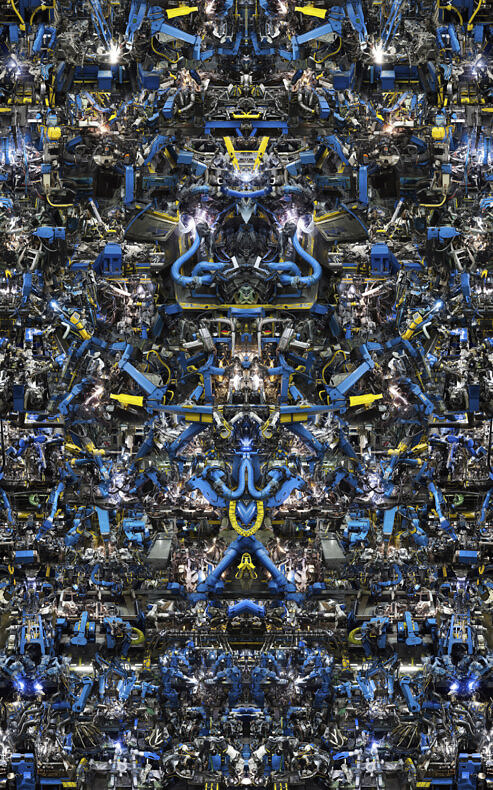

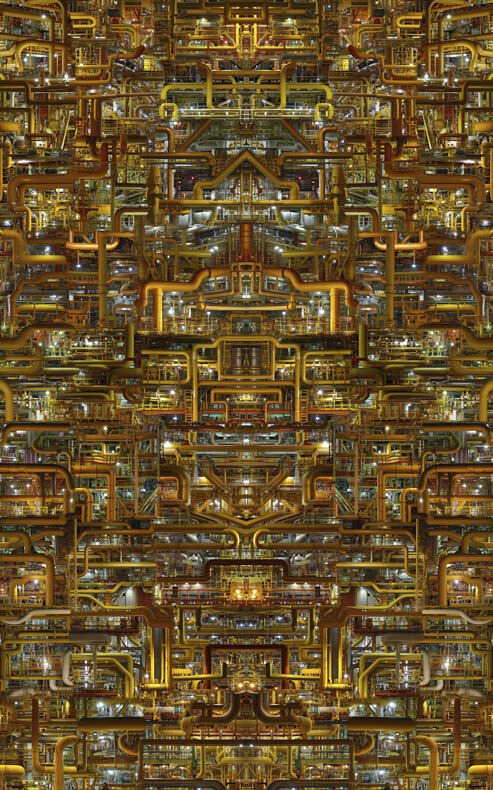
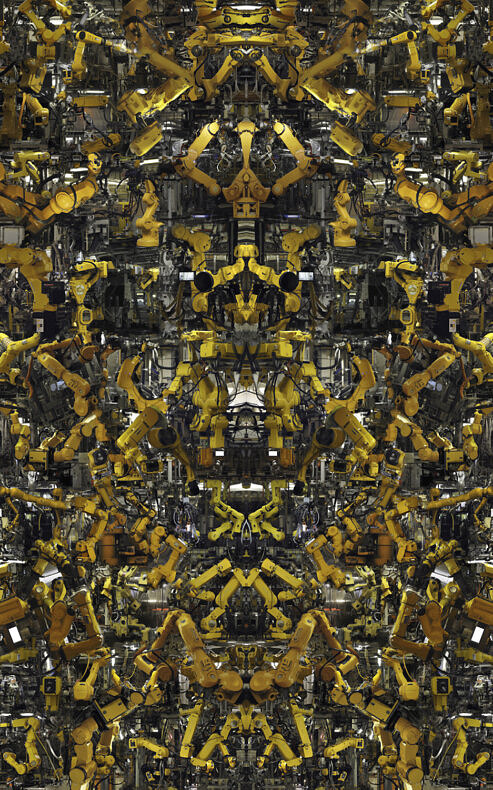
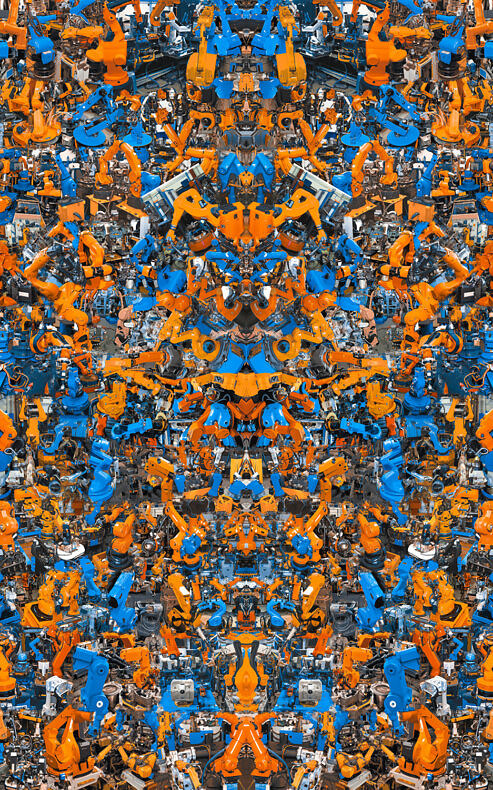
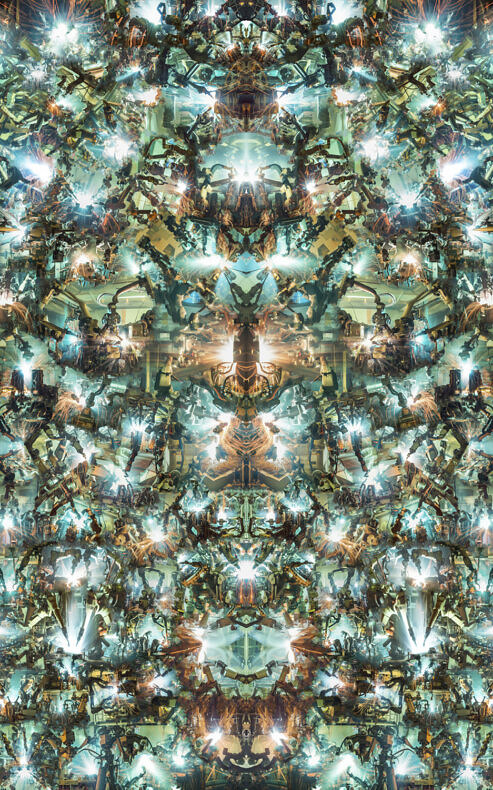

The era of Artificial intelligence is usually imagined as the time when humanoid robots will interact with us in our daily lives. Failing to realize that we have been interacting with AI for some time now already led me to wonder how to visualize software rather than through the hardware it manifests itself? If AI is the spirit what can be its body?
Work has always been a part of human life to be regulated by religion, ideology, and governors. One’s job defined the person’s place in society, perceived identity, and self-esteem. In this series of works I decided to focus on industrial settings as I find it important to reflect especially on this creative, productive and even enovative aspect of AI that now is able to operate a production line with the minimum help of human workers.
Throughout human history, creativity was considered to be a divine power. Gods were believed to be the ones that created the world and humankind. In ancient Greece, inspiration was granted to mortals by the Muses, and thus artists were considered vessels through which higher truths could be translated into an art form accessible to humans. Today AI doesn’t need any other inspiration than its training set of billions of images created by the painstaking effort of humans.
To create those structures that I call Technototems I insert a text prompt to a text-to-image generating AI using a prompt like, for example, ” a complex and sophisticated structure of pipes, valves, manometers, used in oil refineries”, then I select an image I like and ask the program to create many variations of it. I use the images produced by the AI as tiles. To create the final result I mirror half of the constructed image. The final image is composed inside our brain, in the fusiform gyrus area, which is dedicated to face recognition and tricks us to see faces in everyday objects, an illusion that is called face pareidolia. Interestingly enough, just as the first thing that human babies can recognize is their parent’s face, the first field of machine vision to evolve was face recognition. Through this biological process which is vital for our survival these structures are transformed into beings.
Since AI spreads across productive and creative industries and work positions are eliminated, are we condemned or freed? Are we giving up too much of ourselves in exchange for the hard work it offers to do for us? What happens inside AI’s opaque, complex, mathematical minds? What are their ethics? Who are these entities? Are they restless slaves we exploit or the masters we obey?
All images ©Maria Mavropoulou